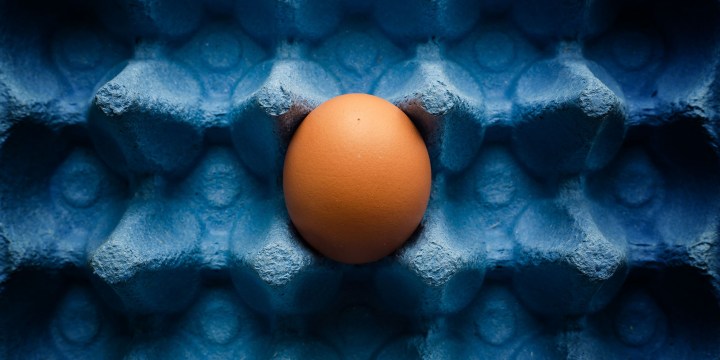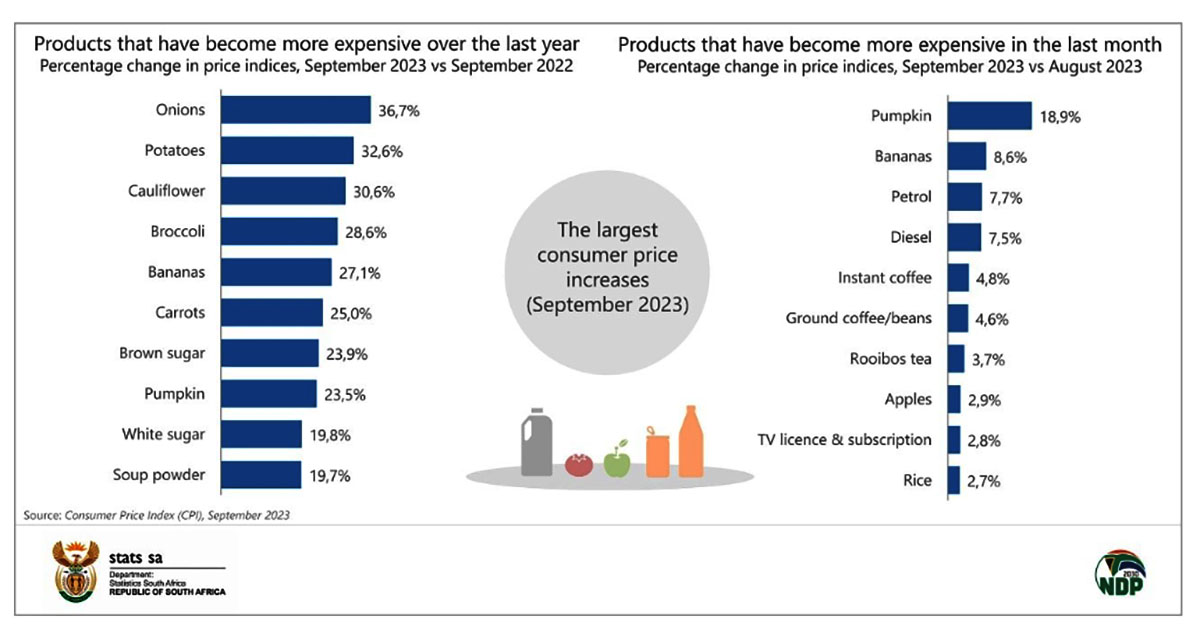COST OF LIVING
Consumer inflation rate increases in September, driven by fuel and food

All eyes will be on the food price basket to see if the outbreak of avian flu — already negatively impacting the poultry industry — will push the prices of chicken and eggs even higher.
The cost of living in South Africa worsened during September as seen in the consumer inflation rate rising for the second consecutive month.
According to data from Statistics South Africa, the consumer inflation rate increased to 5.4% in September from 4.8% in August — maintaining pressure on the South African Reserve Bank to step up its efforts in increasing interest rates to curb price growth. The bank’s officials are expected to meet from 21-23 November to decide on interest rates for the final time in 2023.
In recent weeks, SA Reserve Bank officials, including Governor Lesetja Kganyago, have warned that the battle to reduce inflation through interest rate hikes is not over as they still see several risks that would push the inflation rate higher. The central bank expects the weakness of the rand against major currencies and higher international oil prices, which lead to higher petrol and diesel price increases, to be the main drivers of inflation.
At 5.4% in September, the inflation rate is still within the SA Reserve Bank’s target range of 3% to 6%. But it is edging closer to the upper end of the range.
The unrelenting fuel and diesel price increases in recent months are the primary cause of higher inflation. Statistics South Africa has noted that the price of inland 95-octane petrol jumped by R1.71 a litre in September, reaching a 13-month high of R24.54.
The fuel index — consisting of the overall movement in the price of all grades of fuel — increased for a second consecutive month, rising by 7.6% between August and September. The transport category — mainly influenced by fuel — contributed the greatest increase to the overall inflation rate in September. Transport contributed 0.4 of a percentage point to the 0.6% monthly rise in the overall inflation rate, which reached 5.4%.
Food inflation
Food price inflation remains a major concern.
After cooling for the past five months, the inflation rate for food and non-alcoholic beverages increased in September to 8.1% from 8% in August. Vegetables, fruit, and meat are the food categories that saw higher inflation rates in September (see below).

(Source: Statistics South Africa)
All eyes will be on the food price basket to see if the outbreak of avian flu — negatively impacting the poultry industry — is pushing the prices of chicken and eggs even higher.
The government announced that about 2.5 million chickens bred for their meat had been culled, while the SA Poultry Association indicated that another five million egg-laying chickens had been culled.
Statistics South Africa said poultry-related products experienced some upward price movements in September as producers started to cull birds in response to the outbreak of avian flu. Examples of the impact include fresh whole chickens (the price of which increased by 2.2%), fresh chicken portions (up by 2.2%), and non-IQF (individual quick freezing) chicken portions (up by 1.9%). Egg prices registered a monthly increase of 0.3% following a decline of 0.4% in August.
Statistics South Africa said prices for poultry-related products “deserve a close watch in the coming months to gauge the impact of the avian flu outbreak”. The October inflation reading, due for release on 22 November, will provide the next update on the impact of the outbreak on the poultry industry.
Inflation outlook, interest rates expectations
Nedbank’s team of economists expects the inflation rate to increase slightly in the coming months, mainly due to the rand remaining weak against major currencies and the recent rise in international oil prices. Nedbank expects the inflation rate to remain below the upper end of the SA Reserve Bank’s target, hovering between 5% and 5.5% in the final months of the year, averaging 5.9% in 2023.
The bank expects the SA Reserve Bank to leave interest rates unchanged in November and start a mild easing in 2024.
“However, the risk of further US interest rate hikes and its likely adverse implications for the rand, as well as the uncertainties around load shedding, domestic weather patterns and global oil prices, will also keep the MPC [the SA Reserve Bank’s Monetary Policy Committee] in a hawkish state of mind,” Nedbank said in a note.
Economist Elize Kruger also expects headline inflation to remain above 5% until around the third quarter of 2024, but that the current level of interest rates was sufficiently restrictive.
“The [SA Reserve Bank] will keep rates unchanged at this level for a prolonged period before a first cut in interest rates would be considered,” she said. DM

















 Become an Insider
Become an Insider
Comments - Please login in order to comment.